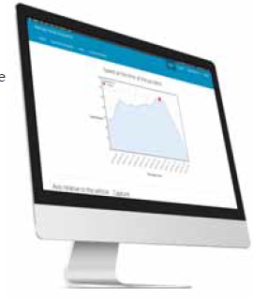OEM connected car solutions: questions of creation and monetization
Author: Alexander Dimchenko, Managing Director, Bright Box

Today the connected car is becoming a commodity. Through surveys of drivers, and competitive intelligence, auto manufacturers have realized that their market rivals have already achieved some success in this field, and consumers now require connected car solutions. And the main question for the industry now is not whether the service is needed, but how to provide it and how to monetize it. These questions need to be considered at the implementation stage.
For the car-maker the implementation of connected car services always means modifying the vehicle’s architecture and on-board vehicle electronics.
It is important to make connected solutions match regulatory requirements in the jurisdiction where the manufacturer operates. These requirements relate to safety. Specifically, the regulatory authorities require that in case of accident the car automatically notifies the relevant services about the accident and its location, and the rescue services are able to contact the driver through the car’s internal systems and to attend the place of the accident they are unable to contact with the victim. The exact requirements are different in each country. But car-makers are required to equip cars with Telematic Control Units, which increases the cost of the car.
Judging from our surveys, consumers expect three great stories from manufacturers in the field of connected-car telematics. The first is the ability to control the vehicle remotely: the owner wants to know where the car is, and to be notified if anything happens. The second concerns remote climate control. This is true in countries with a harsh climate, where it is very hot or very cold. The driver wants to control the climate in the car via engine start-up, or simply to control the cooling / heating system. The third story is about convenience. The consumer wants to be confident in his car and its condition, all the time. If the tyres deflate, he wants to receive a notification about it; if there is an error in the on-board systems, he wants to know so that he can decide what to do.

Connected-car solutions can also offer an improved quality of user experience, when the car has a video screen, by making it possible to connect the vehicle’s multimedia system to a wide range of

cloud services.
This is what the market demands today.
To change the car’s on-board electronics, you need to determine what exactly is to be connected up. The car-maker has to think about data transmission, especially for manufacturers operating in several international markets. It is important to comply with local legislation. Most countries have specific requirements for the storage of personal data, requiring such data to be stored within the country and not transferred overseas. That is why, if manufacturers equip their cars with connected car solutions, they need to understand who will ensure the transfer of data from the car to the cloud and how this will be done.

Accordingly, the question of server infrastructure arises. All of connected cars generate a huge amount of data that must be stored and analyzed. According to our experience, each car generates an average of about 30-50 megabytes per month. If we multiply that by the number of cars and the number of months they will be in service, there will be a huge volume—many terabytes—of data to be stored, backed up, and distributed regionally in accordance with the regulatory requirements. And this presents a certain technological challenge.
No less important is the question of customer experience. What exactly should people be given, on the basis of the connected car platform, in order to make them happy? On the basis of our company’s experience, we believe the best way to provide services to consumers is by way of their smartphones. Smartphones have very high penetration in all countries of the world, and are equipped with operating systems that allow apps to be downloaded. This is the most convenient and effective means of delivering services to consumers. Taking this fact into account, it is necessary to comply with the requirements and recommendations of smartphone vendors in terms of performance, appearance, and platform integration. For example, all platforms now have social network integration, depending on the region—a fact that must be considered. Local adaptation must be very deep. And it is necessary to bear these facts in mind during the system’s design and launch stages. Apps will be different, and therefore it is necessary to consider all these factors when scheduling deployment.
We also believe that it is better not to try using the telematics platform to cover all services and markets at once. We recommend manufacturers to think of the implementation of connected services not as the addition of another option in the car, like new seats or a new multimedia system, but as an IT project, and to follow the methodologies that are accepted in the IT industry for implementing software.
At present, the most effective methodologies are globally recognized to be flexible ones, such as Agile and Scrum, which dictate that services need to be implemented iteratively. Any connected car solution can be updated remotely. With connected car technology the car-maker can deliver updates via the cloud, as is customary with modern software manufacturers such as Apple, Google, and Microsoft. In the process they can roll out new services, modify existing ones, improve the user experience, and correct any errors. Accordingly, it is better to run this kind of service by proceeding from a smaller function set to a larger one, constantly analyzing the functionality provided, tracking use statistics, and improving it with each update.

By combining flexible software elaboration with this approach, car manufacturers can implement the core technology very quickly, over a period of six or seven months, test it using standard methodologies that the manufacturer accepts prior to marketing, and then add more and more updates. It is not necessary to try to do everything at once. You can start with a few functions, and then gradually and constantly add new ones. This also has a positive effect on consumer satisfaction with the car and the brand. Receiving all these new features, months after buying the car, extends the driver’s pleasure of ownership, which also increases the chance he will return to the brand for his next purchase.
Of course it is important to pay attention to the engineering and technological characteristics of the software and of the infrastructure that will support the connected car service. Our experience indicates that it does not make sense to invest in a specialized data center. It is better to use the cloud, particularly given that there are now a lot of vendors who provide cloud infrastructure, so as to minimize the cost of the product launch. If the manufacturer sees the potential to generate revenue for himself, he can always transfer the service to his own data centre. But we recommend to begin by minimizing costs on startup by using a cloud system. Doing everything independently and from scratch will definitely make the cost of launching the technology higher than it needs to be. And everybody who launches a project is concerned about how to recoup the costs of deploying and supporting the technology, and how to make money.

How to monetize independent connected-car solutions
The first option is to make the services paid. Car-makers can distinguish between different expenses for the launch of their products. Everybody has cars that they sell with a few modifications. There is always a choice: either provide connected car functionality for the entire range, or offer it only for premium class. It is important to find a balance.
In this case, users pay for the service themselves. But, according to our statistics, this option works less well. No more than 30% of users are willing to pay any significant extra money for this kind of service. At the same time, more than 80% of respondents say they want connected services in the car for free. They have paid for the car, and they think that’s enough.

The second option is a freemium model. Car-makers can see what happens in a sector like IT: how free services work, especially those with a large audience (search, mail), and how they are monetized.
One answer is that these services are monetized through data or through the sale of data to third-party companies that sell services or products to the auto manufacturer’s audience. Thus, the car-maker can create a marketplace where a variety of additional services are sold to motorists. This requires that the telematic services and applications are free. According to our statistics, more than 90% of consumers who receive such functionality for free activate services and really use them at least twice a day. This means that the application will attract high traffic, and any marketplaces that there may be will be effective because of their large audience, comparable to the total audience for the car manufacturer.
Besides marketplaces, selling data about drivers can be useful to all companies interested in this audience. First of all, there is insurance. The smart insurance business is growing worldwide. This is linked to the fact that insurance companies find it very profitable to reduce risk by selecting policies and offering discounts based on driving style.

A safe driver who is willing and able to provide data about his driving makes an attractive client for an insurance company, allowing them to reduce the cost of insuring against accidents. Insurance companies will pay to gain access to clients of this kind. Thus, the car-maker can get the business of generating leads for insurance companies, and creating a marketplace for insurance services. Selling data is relevant also for car dealers and providers of map services.
If the manufacturer sells a large volume of cars, the last version of monetization is the most appropriate. For manufacturers operating in the premium and luxury sector, with a small audience, the easiest way is to include the cost of these services in their margins, and make them available free of charge. But for manufacturers in the mass sector, selling very high volumes, it is better to monetize connected car functionality through the sale of additional services, and through selling data to third parties. This must of course be done with the driver’s consent: and, in turn, drivers will receive discounts and special offers.


